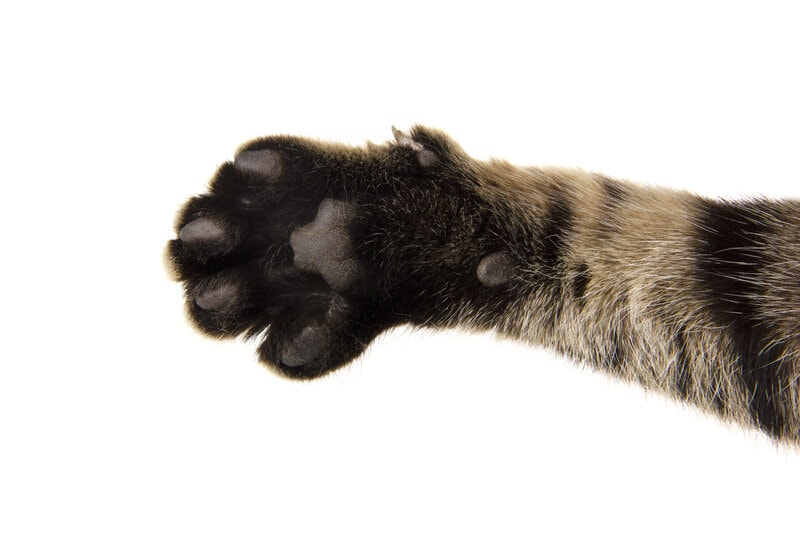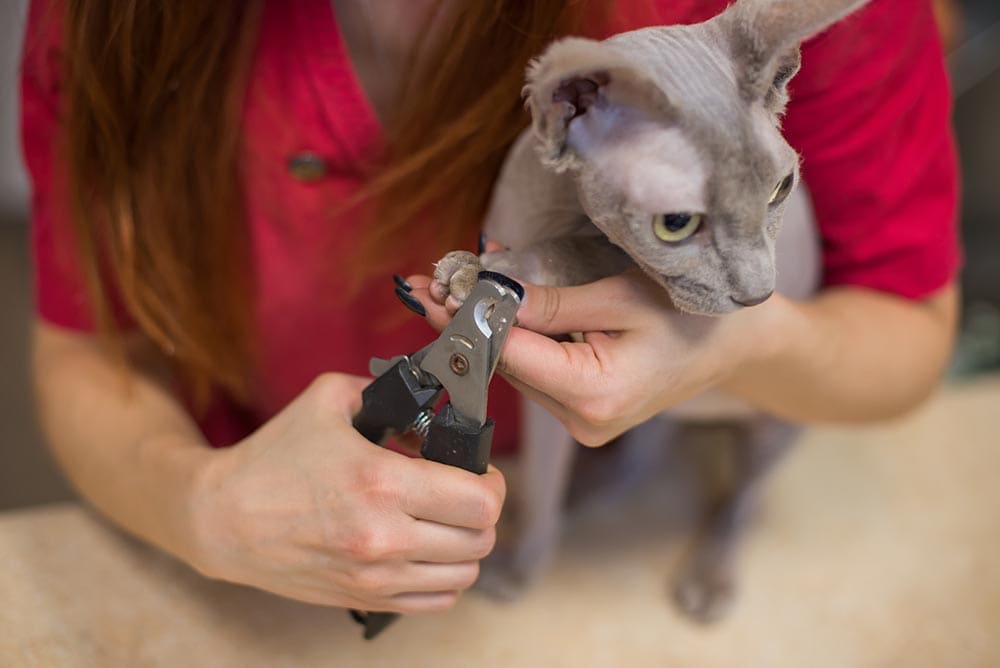
If you’ve caught your cat spreading its toes wide as they stretch, you might have spotted something unusual about its feet. Could an animal that notoriously dislikes water actually have webbed feet? Yes, all domestic cats have at least partially webbed feet, and it’s completely normal.
In this article, you’ll learn the origins of the housecat’s unique paw design and its purpose. We’ll also discuss how to keep your cat’s feet healthy and some tips for teaching them to let you handle their feet.
What Are Webbed Feet Anyway?
Spread your fingers and look at your hand. Most of us won’t see any skin between our fingers connecting them. In contrast, when your cat spreads their paws, you’ll notice extra skin between each one, joining them together.
That extra skin is what is referred to as webbed feet. Some birds or animals, like a duck, have fully webbed feet with connecting skin extending to the end of each toe.
The amount of webbing varies between individual cats and breeds. It’s also easier to see this paw feature on hairless cats like the Sphynx than on fluffballs like the Maine Coon.
Why Do Cats Have Webbed Feet?
Domestic cats owe their partially webbed feet to genetics passed on from their wild animal ancestors. Many wild cats have webbed feet as well. For wild cats, this unique feature serves a vital survival role.
The primary purpose of webbed feet is to help an animal swim better, and cats are no different. Wild cats like tigers and jaguars are not afraid of water and are excellent swimmers, partly because of their paw webbing. This swimming ability allows these big cats to hunt prey in and near the water and take the aquatic route if they need to escape from human predators.
Webbed feet help stabilize the cat’s foot, especially in muddy or slippery terrain. This allows the cat to run, jump, and hunt more efficiently.
While most domestic cats don’t need to hunt for survival anymore, their partially webbed feet also serve the same purpose as it does for their wild relatives.
Stray cats still use their hunting skills to stay alive and may also need to quickly climb a tree or swim away from the many dangers that lurk outdoors. And even pampered indoor cats enjoy using their athletic skills, climbing cabinets, and stalking toy mice.

Protecting Your Cat’s Webbed Feet
As all cat owners know, our feline friends are sometimes too curious for their own good. And in many cases, their paws get them into trouble as they use them to poke around and explore. Here’s how you can keep your cat’s cute, webbed feet safe and healthy.
Cats can injure their paws in numerous ways, whether indoors or out. Keep your house as cat-proof as possible by storing chemicals and cleaners safely away. Cats can suffer chemical burns on their paws from these substances or poison themselves by licking them off their feet.
Don’t let your cat play on the kitchen counters unsupervised, especially while the stove is on, to prevent burns. Outdoor cats can burn their paws on hot pavement or suffer cuts. Another common source of injury is torn claws, especially when the cat’s toenails aren’t trimmed regularly and grow long.
Keeping your cat’s toenails trimmed and regularly checking their paws for injuries is essential to keeping their feet healthy. When you bring a new kitten into the house, spend time each day playing and handling their feet to help them get used to the process. This will make it much easier for you to perform nail trims and other paw checks when they’re older.
If your cat came into your life as an adult, you could still teach them to accept paw handling, but it may take some time. When your cat is relaxed, gradually get them used to having their feet touched while offering treats to reward them. This allows the cat to form a positive association between you touching their feet and receiving yummy treats.
Depending on your cat’s personality, it may take a lot of time and patience for them to learn to accept nail trims. If you are having trouble, ask your vet for assistance or have them perform the nail trim for you.

Conclusion
Whether or not you ever lay eyes on them, your cat has partially webbed feet, and it is nothing to worry about. This physical feature is one of many that your pet shares with tigers and other magnificent wild cats. Cats of all sizes are some of the most effective predators ever to exist, and webbed feet are just one of the traits that help make them what they are.
Featured Image Credit: Valeriia Miller, Unsplash







